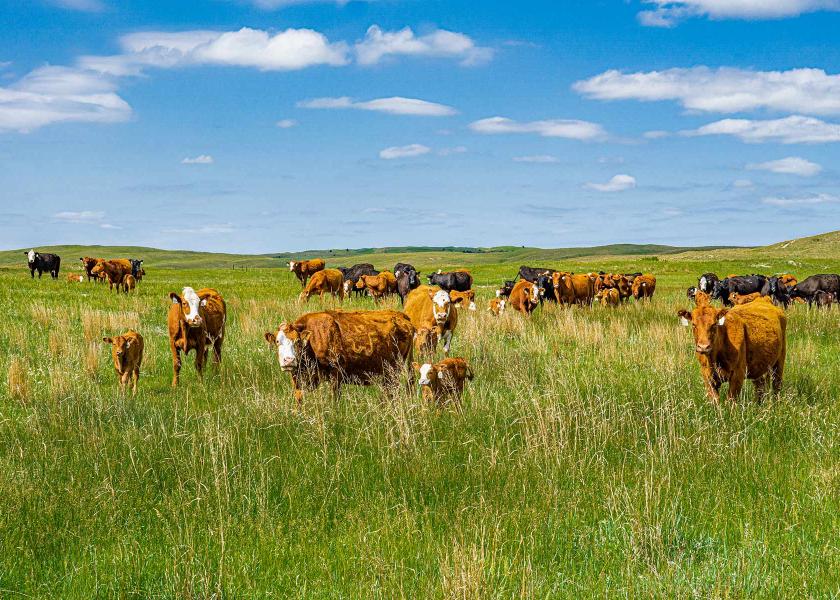Sexten: Weaning Barometer

Technology offers little management improvements of the time-tested practices associated with successful weaning management. A quick review of three key steps to help calves make the transition from nursing to “bunk broke” before addressing the opportunity technology offers at weaning.
Making sure water is clean and easily accessible is the first and most important step to healthy calves. Consider using an open water tank, filled several times a day, which may provide timid calves easier access and audible cues to find the water while you are checking them. For calves trained to automatic waters, now is the time to clean them out.
Weaning calves in grass traps or pasture provides dust control in addition to a familiar source of nutrition. Consider saving a small pasture to wean calves in or wean before pasture becomes scarce to take advantage of nature grazing behavior. If you are weaning the calves in a lot, now is the time to use high-quality (ideally mixed grass and legume) hay to maximize the nutrient intake and digestibility.
After clean water and a familiar forage are on offer now consider a palatable, nutrient dense feed. Intake the first week after weaning will range from 0.5 to 1.5% of body weight so nutrient density is key. Mounting an effective immune response at weaning requires increased energy and protein. When intake is low, increase the energy and protein density to provide the needed nutrients for a calf to respond to vaccines. While a commodity mix may work to supplement healthy yearlings, a calf at weaning may not be able to consume enough to meet the increased nutrient demands due to stress.
Once the nutritional foundation of weaning success is established, we can consider a retrospective evaluation of the management that got us here. Weaning is a key checkpoint along the management calendar of the cow herd yet for some this barometer of success is missed due the inability to translate data into information and ultimately decisions.
This year has been one of the most diverse weather years in memory. Many areas with excessive rainfall during a relatively mild summer made for abundant forage. Other areas are in the grip of historic drought with wildfires burning up pastures and affecting the air across the country.
While feed and forage resources are variable across the country the ability to evaluate cowherd management in the context of your environment remains. In the case of environmental extremes producers get the “opportunity” to evaluate the herd’s adaptive range.
In the case of extreme drought, who are the cows that maintained condition and successfully bred back? Were they cows that sacrificed milk production to transfer productivity from one year to the next? While these cows yield a smaller calf this year the cost of an open cow should more than offset the marginal calf revenue given up.
Alternatively, in the Midwest and southeast where forage is abundant cows should be able to express their full genetic potential. In a more normal year high performing cow’s milk production may be limited by forage availability. Remove the forage availability as a constraint to milk production and the below average milking cows show up with smaller calves and abundant body condition.
The previous examples use the current environmental extremes to help evaluate cow herd productivity but against what standard? In the absence of records a few conclusions may be drawn by looking at relative weaning performance. However, in most herds, the between cow variation due to age and genetics makes these comparisons difficult at best and are certainly not something to base culling decisions on.
Imagine if we could determine these adaptive qualities before investing the development cost of replacement heifers, building an adaptive herd over time. In areas where forage is limited, sorting the prospective replacements to those optimized to your system is even more important this year.
Genetic testing of your replacement heifer prospects before investing in development is a technology offering several advantages regardless of your current forage inventory. By waiting until weaning you gain the opportunity to visually sort the replacements then test those you are planning to retain. Bunk break the replacement prospects while waiting for test results, then those that don’t fit your genetic criteria are ready for marketing.
Using genetic tests to make your first sort on the replacements provides the opportunity to evaluate the genetic potential without the help of mother nature. The examples above showed how cows may respond to the extremes. In the case of the high performing cows, drought provides reproductive risk due to high milk production potential.
Rather than simply observing how the cowherd responds, the historic approach, imagine if you managed the high performing cows differently during years of drought because you have a barometer of the greater reproductive risk. That is precision livestock farming, optimizing the resources using technology to predict and manage outcomes rather than simply recording history.







